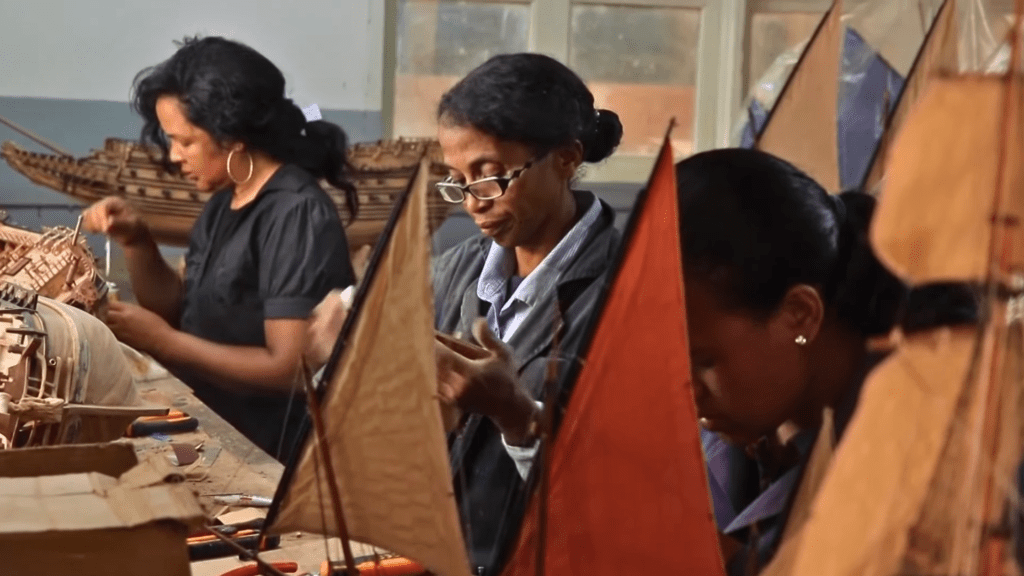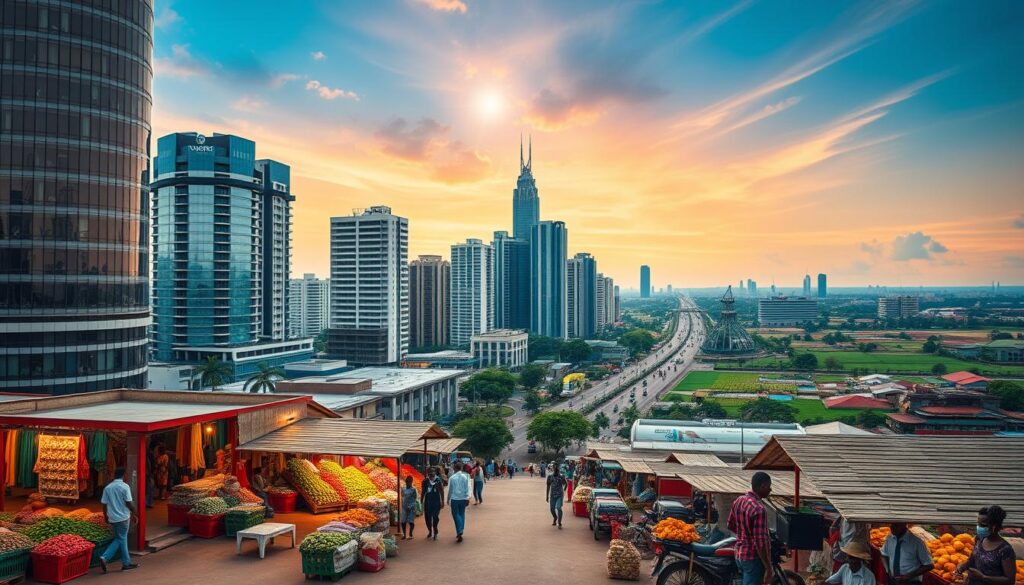Madagascar’s Master Model Shipbuilders Shine on Global Stage

Madagascar, a nation better known for its rich biodiversity and unique wildlife, is gaining international attention for a less obvious reason: its masterful model shipbuilding industry. Tucked away in the bustling capital of Antananarivo, a small team of artisans at Le Village is putting the island’s craftsmanship on the map.
ALSO READ: 10 Formidable African Warrior Queens Who Became Legendary
Through their intricate hand-crafted model ships, this team of talented craftspeople has attracted prestigious clients, including royalty and even the Vatican. Their work is now being recognized as a testament to Madagascar’s burgeoning reputation in luxury craftsmanship, with two of their ships set to be displayed at the esteemed Homo Faber biennial fair in Venice in 2024.

While Madagascar may not have a deep-rooted shipbuilding tradition, Le Village has transformed this narrative since its establishment in 1993. Over the decades, the workshop has grown into a symbol of high-quality craftsmanship, creating some of the world’s finest model ships, each painstakingly built by hand. This unique blend of artistry and precision has earned the team international acclaim and helped boost Madagascar’s visibility in the global luxury crafts market.
The Journey from Humble Beginnings to International Prestige
Le Village was founded over three decades ago with the simple goal of making model ships that capture the beauty and intricacy of historic vessels. Over time, this workshop has blossomed into a revered institution. Its reputation for crafting highly detailed ships led to some remarkable commissions, including orders from King Felipe VI of Spain and Pope Francis. Such high-profile clients are a testament to the quality of the work produced by this small Malagasy team, which combines traditional craftsmanship with a passion for precision.
The workshop’s model ships aren’t just local treasures—they are now recognized internationally. Two of Le Village’s prized pieces will be showcased at the Homo Faber fair in Venice, an event dedicated to celebrating the world’s finest craftsmanship. This is a significant achievement for the workshop and Madagascar, placing the island nation firmly in the spotlight on the global art and design stage.
Gregory Postel, a French investor and model ship enthusiast who became co-owner of Le Village last year, expressed his excitement over this accomplishment. “Investing in people, pushing them to go above and beyond to make tailor-made models, and at the end, someone specialized in luxury craftsmanship, the best in the world, tells us, ‘we can’t make do without you, you have to come,’ for me, it’s a success,” he says. For Postel, having the opportunity to present Malagasy craftsmanship at such a prestigious event is both an honor and a stepping stone towards greater international recognition.
Craftsmanship and the Local Economy
The rise of Le Village not only showcases Madagascar’s craftsmanship but also represents a critical economic opportunity for the country. As one of the poorest nations in the world, Madagascar faces significant economic challenges. The success of workshops like Le Village can play an essential role in stimulating local employment and providing much-needed economic stability.
Today, the workshop employs 32 craftspeople, many of whom have been with the company since its early days. With no formal craftsmanship schools in Madagascar, the art of model shipbuilding is passed down from experienced artisans to newer recruits. This form of mentorship has created a close-knit community of craftspeople dedicated to preserving the meticulous art of model shipbuilding.
Romy Henintsoa, assistant manager at Le Village, explains the multi-step process involved in crafting these ships. “It starts with the wood cutting, then the production of the deck, the production of the pieces,” she notes. The process involves three types of handcrafted elements: sculpted, handmade, and turned pieces. After the ship’s deck fittings are prepared, the final step involves assembling and finishing the model, which includes sanding, sewing, painting, and varnishing the boats to achieve a stunning level of detail.

The time invested in each model depends on its size and complexity. Some ships take as little as one month to complete, while others can take up to ten months. These miniature masterpieces are designed to be as accurate as possible, with plans obtained from museums, shipping associations, and marine architects. Most of the models replicate historic vessels from the age of sail, as modern naval information is often highly classified and unavailable.
Madagascar’s Sustainable Approach to Craftsmanship
One of the standout features of Le Village is its commitment to using sustainable, locally sourced materials in its models. The boats are made primarily from Anakaraka wood, a material native to Madagascar. The sails, crafted from Malagasy cotton, are given a unique coloration by being dipped in tea. Even the iron and copper elements of the boats are fashioned from recycled materials, ensuring that the models are both beautiful and environmentally responsible.
This approach not only highlights the importance of sustainability in craftsmanship but also reinforces Madagascar’s potential as a global leader in eco-friendly luxury products. By emphasizing local materials and recycling, Le Village sets an example for how traditional craftsmanship can coexist with modern sustainability practices.

The Impact of COVID-19 on Le Village and the Path Forward
Like many businesses worldwide, Le Village suffered during the COVID-19 pandemic. The global shutdowns and travel restrictions had a devastating impact on the tourism industry, which had been a key market for the company’s model ships. Before the pandemic, the workshop was selling around 300 ships annually, but in 2024, they are hoping to sell between 80 and 100 pieces as they work to rebuild their customer base.
Despite these setbacks, the team at Le Village remains optimistic about the future. The opportunity to exhibit at the Homo Faber biennial is expected to generate new interest in their work and attract clients from across the globe. With the continued support of international investors like Gregory Postel and an unwavering commitment to quality, Le Village is poised to reclaim its position as a leader in luxury craftsmanship.
ALSO READ: Rabat Named World Book Capital for 2026: A Literary Celebration of Morocco’s Rich Cultural Heritage
A Bright Future for Madagascar’s Crafts Industry
The success of Le Village is a powerful example of how Madagascar’s rich artisanal heritage can be harnessed to drive economic growth and global recognition. While the country may not have a long-standing shipbuilding tradition, the remarkable craftsmanship and dedication displayed by the team at Le Village have carved out a new path for Malagasy artisans.
As Madagascar continues to emerge as a hub for luxury craftsmanship, the model shipbuilders of Le Village are helping to redefine the nation’s global image. With their exquisite attention to detail, sustainable practices, and international acclaim, these artisans are proving that even the most remote corners of the world can shine on the global stage.

For Madagascar, the success of Le Village represents more than just a victory for craftsmanship—it symbolizes the potential for growth, sustainability, and international collaboration in one of the world’s poorest yet most vibrant countries.







Responses